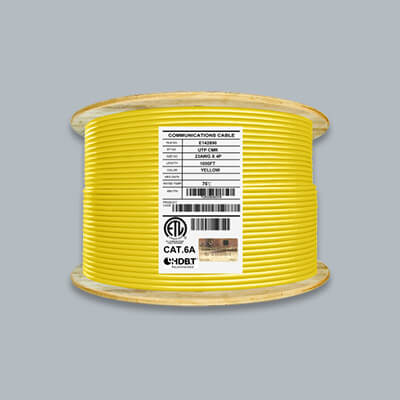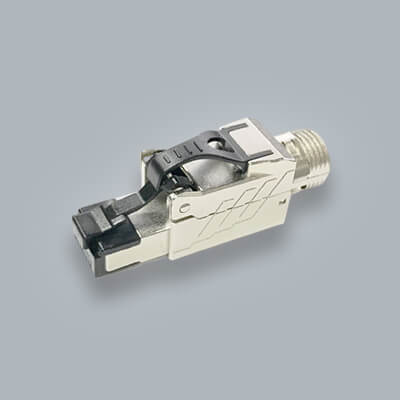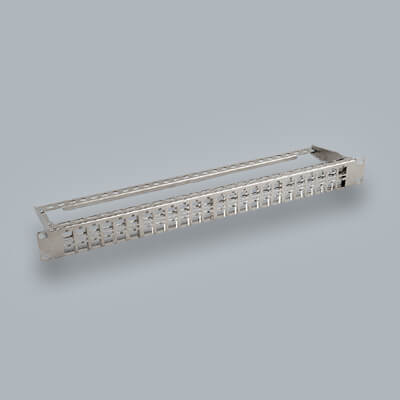How Many Cable Pairs Are Needed For 1000Base-T Transmission?

Whether upgrading your network or looking to make minor changes to your existing its possible that you will be looking at gigabit speeds. Depending on your network size and requirements the ethernet speed you need will vary. This can be from 10Mb/s all the way to gigabit speeds and beyond. Each person and company have required data rate needs and this is why you see so many different cables and gear in the market today. One of the most popular types of ethernet today is gigabit ethernet. Gigabit ethernet is also referred to as 1000Base-T and in this articles we will go over its basics what you cables pairs are needed for 1000Base-T transmission?
Introduction to 1000Base-T
1000Base-T is an ethernet standard created by IEEE to oversee its function in the market place and design. The official standard for 1000Base-T (gigabit speeds) is IEEE 802.3ab. It is designed to run on twisted pair copper cables over various categories. These copper cable categories are Cat5, Cat5e, Cat6 and Cat6A. This standard can also be run using cables such as Cat7, Cat7A and Cat8.
The maximum distance for 1000Base-T transmission is 328 feet (100 meters). This is the recommend length set by IEEE and TIA for optimal performance in the field of use. Achieving this performance in standard IEEE 802.3ab requires a minimum spec cable of Cat5e. Basically any cable Cat5e and beyond you will be able to perform gigabit speeds on.
To achieve gigabit speeds on copper cables it's important to know how many cable pairs are needed for 1000Base-T transmission. Each copper cables from Cat5 and up have 8 wires in them. They are combined in to 4 pairs of 2 wires which are then surrounded by a type of insulation material depending on the cable type.
Some of these cable types are CM, Riser, Plenum and CMX.
Lets now get to why your here! Lets get into how many wires are needed for 1000BaseT
How Many Cable Pairs Are Needed For 1000Base-T Transmission on Cat5?
We've included Cat5 cable because you can actually get gigabit speeds on it. This is mainly for if you already have existing Cat5 cable in your home. It is recommended however to use at least Cat5e cable today for 1000Base-T transmission. This is because Cat5e improves on crosstalk performance and there is a good chance that the Cat5 cable will be worn down over time. That said you need 4 pairs of Cat5 cable for 1000Base-T transmission. Using all four pairs ensures you have the link strength to achieve this speed.
You'll notice a common theme across all these cables when trying to achieve gigabit speeds.
How Many Cable Pairs Are Needed For 1000Base-T Transmission on Cat5e?
On Cat5e cable the same is to be said. You need to use 4 pairs on Cat5e cable for 1000Base-T transmission. This adheres to IEEE 802.3ab (gigabit ethernet). Cat5e cable can be run up to 328 feet and is suitable for speeds up to gigabit. This means where using for 10Mb/s or 500Mbps a Cat5e cable will do just the job.
How Many Cable Pairs Are Needed For 1000Base-T Transmission on Cat6?
Can you guess the number of pairs needed for Cat6?
That's right, on Cat6 cable you need to use 4 pairs for 1000Base-T transmission. Cat6 cable can achieve gigabit ethernet up to 328 feet (100 meters). It is also backwards compatible with Cat5e connectivity. This means that if you want to run gigabit on Cat6 cable using Cat5e keystone jacks it is possible. It's not recommended but it is possible. For Cat6 cable we recommend to keep the whole channel Cat6 rated. This ensures that their is not potential problems in the link chains. This also gives you the opportunity to run 10Gbps at shorter distances.Which is possible on Cat6 up to 180 feet. Though this is not guaranteed but is achievable.
How Many Cable Pairs Are Needed For 1000Base-T Transmission on Cat6A?
For the final cable category we will dive into is Cat6A. On Cat6A cable you need to use 4 pairs for 1000Base-T transmission. Cat6A cable advances on both Cat5e and Cat6 cable by being specd for 10Gbps. So when needing 1000Base-T using a Cat6A cable might be more than you actually need. Cat6A can give you future proofing benefits if you do plan on 10Gb speeds in the future.
Final Thoughts
As you can see there are many different cable you can run 1000Base-T on. From Cat5e, Cat6 to Cat6A and beyond 1000Base-T can be deployed using all four twisted pairs. Happen to have a Cat5 cable in your walls? You can give gigabit speeds a go on it using all 4 twisted pairs in the cable. It's not a guarantee it will work but worth a shot. With the increase in cable performance you get from copper twisted pair cables today it's recommend to install at the minimum Cat5e cable. This will ensure better performance with crosstalk and you will be better prepared knowing that gigabit ethernet is built in to the spec.





